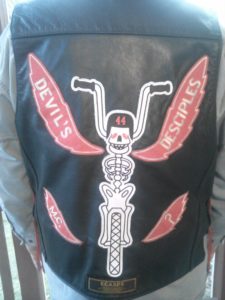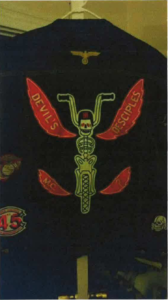When reviewing a settlement agreement, I often ponder the parts where it says something like “Party B agrees not to infringe the trademark in the future.” The agreement doesn’t need it; whether you say it or not Party B isn’t allowed to break the law. I suppose adding the language gives you a breach of contract claim, but that will rarely get you any remedy that the trademark infringement wouldn’t.
Zetor North America learned that it may have been too kind when it allowed a settlement agreement to elaborate on what kinds of uses would not be infringing. Defendant Ridgeway Enterprises thereafter tried, albeit unsuccessfully, to use the effort to claim it had a trademark license.
Plaintiff Zetor North America is a subsidiary of Czech company Zetor Tractors a.s., which is a subsidiary of HTC Holding a.s., the owner of the ZETOR trademark for tractors.

Defendant Ridgeway Enterprises is a non-authorized reseller of Zetor tractor parts. Its materials don’t always make very clear which parts are authentic Zetor parts and which are manufactured by others. In 2009, HTC, Zetor Tractors, Zetor NA and Ridgeway Enterprises entered into a settlement agreement over Ridgeway’s practices. In it, Ridgeway agreed that it would permanently cease and desist from the use of the ZETOR mark, except as a descriptive phrase in promotional/advertising materials to describe that a Ridgeway product is compatible with a referenced Zetor product or technology. The agreement elaborated with the following requirements:
a. The Zetor word mark is not part of the advertised product name.
b. The Zetor word mark is used in a descriptive phrase such as “fits,” “for use with,” “for,” or “compatible with.”
c. The Zetor word mark appears less prominent than the product name.
d. The product is in fact compatible with, or otherwise works with, the referenced Zetor product.
e. The reference to Zetor does not create a sense of endorsement, sponsorship, or false association with Zetor or Zetor products or services.
f. The use does not show Zetor or its products in a false or derogatory light.
On the second go round, when Zetor NA sued Ridgeway in 2015, Ridgeway claimed that it had a license to use the Zetor mark so Zetor NA’s suit for trademark infringement was therefore a breach of the contract. The court disagreed, dismissing the counterclaim:
Zetor NA argues that the settlement agreement did not create a license for Ridgeway to use the mark, as Count II of the Counterclaim alleges. Instead, the settlement agreement merely outlined for Ridgeway’s benefit an acceptable set of uses of the mark that would not violate federal or state trademark law. According to Zetor NA’s analysis, anyone could use its mark in the ways described in the settlement agreement and not run afoul of the law, since such uses would comport with the “fair use doctrine,” which the law has exempted from trademark enforcement. Zetor contends that, since the settlement agreement conferred no special rights or privileges on Ridgeway to use the mark, the agreement could not possibly have been breached, as a matter of law, by Zetor NA’s decision to sue Ridgeway for illegally using the mark.
The Court agrees that the Ridgeway Defendants cannot make out a cognizable breach of contract action based on Zetor NA’s decision to sue for infringement in this case. Although the Ridgeway Defendants argue that their usage of the Zetor mark does, in fact, conform to the usage restrictions spelled out in the settlement agreement or otherwise qualifies as fair use, this argument is simply an affirmative defense to the claims in the Amended Complaint. The Amended Complaint itself does not allege that Defendants used the Zetor mark according to the terms of the settlement agreement. Instead, it alleges a use that was contrary to the terms of the settlement, in that it maintains: “Ridgeway’s advertising, marketing and sale of goods using the Zetor name is confusing to the consumer as to the source of the goods and the quality of the product, and dilutes and tarnishes the reputation and good will of the Zetor name.” All causes of action asserted in the Amended Complaint flow from Zetor NA’s contention that Defendants’ illegal use of the mark. Therefore, as a matter of law, Zetor NA’s decision to file this lawsuit alleging such illegal use could not possibly have breached the parties’ settlement agreement.
In hindsight, and as a drafting lesson, the agreement could have been clearer on the purpose of section 2.2, by expressly referring to it as referential use or saying that the described uses would be non-infringing. But it worked.
Sharp readers will have noticed a jurisdictional point, too. The trademark is owned by HTC Holding a.s. but the trademark infringement lawsuit was brought by Zecor NA only. Ridgeway finally woke up to the problem. The court was not pleased:
Before delving more fully into the question of Zetor NA’s standing, the Court must point out the fact that it is most unfortunate that the issue was never raised in the nearly three years this lawsuit has been pending—including when the case was brought before the Eighth Circuit on interlocutory appeal. The parties have been familiar with one another since at least 2008, when Zetor Tractors’ legal counsel wrote a letter to Ridgeway, accusing the company, through its principals, of infringing Zetor’s licensed mark. The threat of litigation in 2008 culminated in a settlement agreement signed in 2009 by representatives of all three Zetor companies—HTC, Zetor Tractors, and Zetor NA—as well as Brent Rozeboom, on behalf of Ridgeway, and Brent and Glenda Rozeboom in their individual capacities.
Up until the present, the Defendants have not suggested to the Court that Zetor NA is the wrong entity to bring this lawsuit for trademark infringement, or that another member of the Zetor family of companies should be joined as an indispensable party. The first inkling the Court was given about the possible standing problem was on June 1, 2018, through the Ridgeway Defendants’ Motion for Summary Judgment. At the time the Motion was filed, the trial of this matter was scheduled to commence less than two months later, on July 23, 2018.
However, jurisdiction cannot be waived, so the court had to decide whether Zecor NA had standing. As to the claim for infringement of a registered trademark under § 32, the claimant must be (1) the owner of the mark, (2) the person or entity to whom the owner of the mark has completely assigned all rights to the mark, or (3) the exclusive licensee of the mark who has either been granted the explicit contractual right to enforce the mark and sue on the owner’s behalf, or else is not restricted by virtue of any term in the license from fully enforcing the mark in the owner’s place. (The court footnoted the fact that in some jurisdictions, the entity in position (3) does not have standing under § 32.) In this case, (1) and (2) were out on their face. Intermediate company Zecor Tractors was also not an exclusive licensee (read the opinion for a thorough explication), so its sublicensee, the plaintiff, could not be a sufficiently exclusive licensee to have standing either.
The standing requirement for a claim under § 43(a) is more relaxed; in that case “‘a plaintiff must allege an injury to a commercial interest in reputation or sales.’ Lexmark Int’l. v. Static Control Components, 134 S. Ct. 1377, 1390 (2014).” However, Zetor NA couldn’t meet this lower bar either:
As previously discussed, the Court finds that the Licensing Agreement between HTC and Zetor Tractors did not specifically grant Zetor Tractors the right to sue and enforce the mark on HTC’s behalf, and instead reserved many rights with respect to the mark to HTC for its exclusive use. Also, the Court found that the Distribution Agreement between Zetor Tractors and Zetor NA specified that Zetor NA’s non-exclusive sub-license to use the mark was even more restricted than Zetor Tractors’ license, particularly with respect to restrictions on geography, as well as other factors. In addition, the Distribution Agreement did not specifically grant Zetor NA the right to sue and enforce the mark on HTC’s behalf and reserved substantial rights to the mark for HTC’s benefit and use. Because of these findings, and because no specific evidence was presented on summary judgment as to what particular injury Zetor NA suffered as to its commercial interest or sales—as distinguished from HTC’s—the Court is reluctant to find that Zetor NA has sufficiently established standing to bring this claim on its own.
Nevertheless, the court ordered that HTC Holding a.s. be added as a plaintiff rather than dismiss the suit.
Zetor North America, Inc. v. Rozeboom, No. 3:15-CV-03035 (W.D. Ark. Aug. 14, 2018).

This work is licensed under a Creative Commons Attribution-NoDerivatives 4.0 International License.






